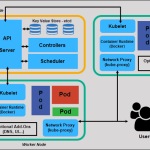Containers have also revolutionized the concept of DevOps by bridging the hole between improvement and operations. With containers, builders can focus on constructing and testing functions, while operations teams can handle deployment and management duties more efficiently. This collaboration allows for quicker software supply and continuous integration and deployment (CI/CD) pipelines.
Microservices
Software Program developers can troubleshoot and change the application code with out interfering with the operating system, hardware, or different software providers. They can shorten software release cycles and work on updates rapidly with the container model. As A Result Of they are light-weight and portable, containers present the opportunity for quicker development and meeting enterprise needs as they come up. Containers help cut back conflicts between your improvement and operations teams by separating areas of responsibility. Developers can focus on their apps and operations teams can concentrate on the infrastructure.

- CaaS sits within the center between Infrastructure-as-a-Service (IaaS) and Platform-as-a-Service (PaaS).
- Various containers can run concurrently on a single host, increasing resource location and evaluating hardware usage.
- Some of these operating methods are open-source and could be freely used, while others are proprietary and are offered as half of a larger service for running containers.
- When these programs are rewritten and modernized, they often take the form of containerized purposes that can be deployed in the cloud as an alternative of an in-house data center.
Aws Containerization Next Steps
In reality, larger applications are often damaged down into microservices that are packaged in separate containers. A microservice is a standalone portion of an software that takes some input, processes it, and generates some output that is despatched back. Examples of microservices embrace the database controller, consumer authentication, a session manager, and many others. Containerization is a versatile expertise with a large assortment of functions vps london across IT.
dockerignore
Scaling containers is fast and can be automated, making it highly versatile and adaptable to altering load conditions. To deploy an utility using container-based hosting, you first have to create a container picture. This image contains all the mandatory files and configurations required to run the appliance. The picture is then saved in a container registry, which serves as a centralized repository for storing and distributing container images. One of the principle advantages of containers in net app improvement is speed. Since containers encapsulate everything the applying needs, developers can rapidly deploy new options and bug fixes without waiting for time-consuming setup processes.





